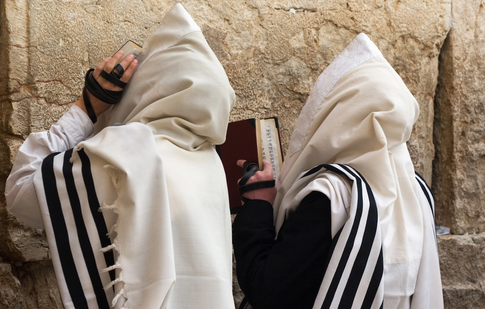The Role of Shabbat in Jewish Life: A Guide for Converts
One of the most profound aspects of Orthodox Jewish life is the observance of Shabbat (the Sabbath), a weekly day of rest that begins at sunset on Friday and ends after nightfall on Saturday. For those on the path of conversion to Orthodox Judaism, understanding and embracing Shabbat is essential to integrating into Jewish life and community.
Shabbat: More Than Just a Day of Rest
For many converts, the concept of a day completely dedicated to rest, reflection, and connection to God can seem both beautiful and challenging. Shabbat is much more than a break from the week’s routine; it is a spiritual experience designed to foster a closer relationship with Hashem and one's community.
The Origins of Shabbat
The roots of Shabbat are found in the Torah, where God commands the Jewish people to "remember the Sabbath day and keep it holy" (Exodus 20:8). Just as God rested on the seventh day after creating the world, Jews are commanded to refrain from work and devote themselves to rest, prayer, and spiritual growth.
For converts, learning the deeper meaning behind this commandment can be eye-opening. Shabbat is not just about avoiding physical labor but about sanctifying time and recognizing the holiness in every aspect of life.
Preparing for Shabbat: A New World for Converts
One of the first steps for converts is learning the practical side of preparing for Shabbat. This includes:
- Cooking in advance: Preparing meals ahead of time, since cooking is prohibited on Shabbat.
- Lighting the candles: Before sunset, two candles are lit to bring in the holiness of Shabbat.
- Welcoming Shabbat in the synagogue: Many Orthodox Jews attend synagogue on Friday evening to welcome Shabbat with prayer and community.
This transition can feel overwhelming, but it also provides a structured, peaceful rhythm to the week. Many converts find that the preparation itself becomes a cherished ritual, building anticipation for the spiritual beauty of Shabbat.
The Shabbat Table: A Place for Connection and Learning
For converts, the Friday night Shabbat meal is often their first experience of the warmth and togetherness that characterizes Jewish family life. It is around the Shabbat table where the weekly Torah portion is discussed, songs are sung, and blessings are made. Many converts find that sharing Shabbat meals with their Jewish mentors and friends allows them to see Jewish traditions in action and provides a sense of belonging.
The Spiritual Impact of Shabbat
One of the most profound transformations for converts is how Shabbat reshapes their relationship with time and spirituality. In a world filled with constant distractions, Shabbat offers a complete disconnection from the material world. No phones, no work—just time to reflect, pray, and be with family or community.
This spiritual focus allows converts to fully immerse themselves in Torah study, prayer, and contemplation. It’s during Shabbat that many converts report feeling their closest connection to Hashem, as the day provides uninterrupted time for spiritual reflection and personal growth.
Shabbat and the Conversion Journey
As you progress on the journey of how to convert to Orthodox Judaism, embracing Shabbat becomes a key marker of your growing commitment to Jewish observance. It’s not only a commandment but a gift, a way of life that reflects the very essence of Jewish identity.
While learning the laws of Shabbat can be daunting, each step brings you closer to understanding the rhythm of Jewish time and the beauty of resting in God’s presence. For many converts, Shabbat becomes the cornerstone of their Jewish life, a time when they truly feel part of the Jewish people.
Final Thoughts
For anyone seeking conversion to Orthodox Judaism, Shabbat offers a gateway into the heart of Jewish spirituality. It’s a time to slow down, reflect, and connect—not only with Hashem but also with the Jewish community. The rituals, prayers, and customs of Shabbat are not just obligations; they are transformative practices that will deepen your relationship with your new faith.
If you’re preparing for conversion and want to learn more about how to incorporate Shabbat into your life, consider starting with small steps: light the candles, attend a synagogue service, or share a Shabbat meal with friends. As you grow in your observance, Shabbat will become not just a day of rest but a weekly reminder of your connection to Jewish tradition and faith.




